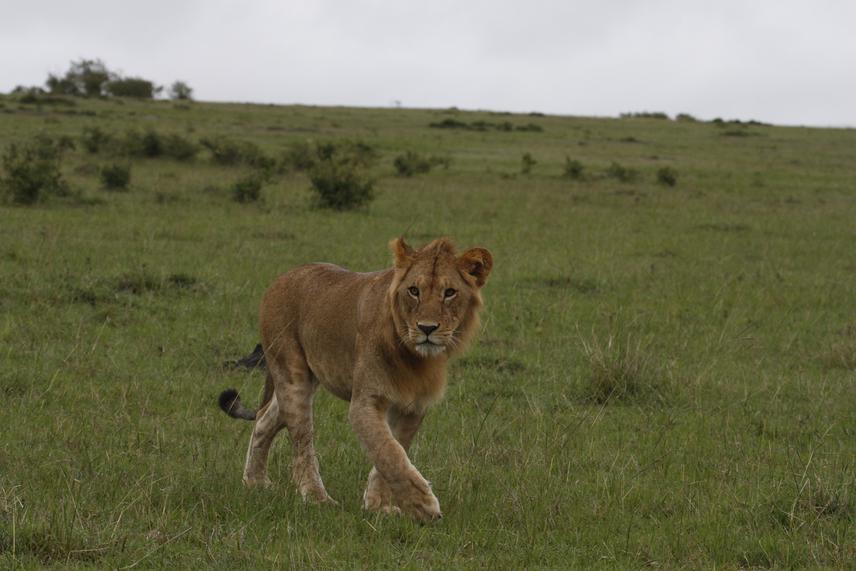Emily Madsen
Carnivores are facing worrying levels of persecution as a result of human-wildlife conflict (HWC), often threatening their survival. HWC often results in killing of the carnivores involved, by individuals grappling with loses such as depredation upon livestock or attacks on humans. However, the perceptions of the conflict rates are not always aligned with the actual occurrence rates leading to misguided control measures targeting certain species without effectively addressing HWC. As human pressures on wildlife areas continue to increase and resources become more sporadic due to climate change, it is highly likely that both perceived and actual rates of HWC for all species will increase.

A young male lion (Panthera leo) in Kenya. © EK Madsen
East Africa boasts an extraordinary guild of carnivores, with over 15 species weighing more than 5kg, many of which are experiencing drastic population declines due to human pressures. Maintaining intact carnivore guilds is of extremely high conservation importance as they provide irreplaceable ecosystem services through their regulation of other wildlife species. As a result, they provide an invaluable contribution to the preservation of biodiversity which is vital for ecosystem stability and resilience. Many rural communities in East Africa rely on natural resources for their livelihoods, therefore preventing the cascading impacts that the loss of carnivores can have on ecosystems is crucial for the communities financial stability and development. As human pressures reshape carnivore community compositions the delicate balance within the carnivore community is being disrupted, potentially leading to significant shifts in human wildlife dynamics, greater conflict and the emergency of new issues.
In response to these pressing issues, undertaking comprehensive research becomes imperative. Our objective is to closely investigate and comprehend the evolving dynamics between humans and carnivores. The ultimate goal is to inform strategies for mitigating future negative impacts, fostering coexistence, and reducing conflict through informed and sustainable management practices. By delving into these complexities, we aspire to contribute to the conservation of carnivores and the preservation of the intricate ecological equilibrium they share with human communities in East Africa.
Header: A serval (Leptailurus serval) in Kenya. © EK Madsen.